Why Rotisserie Chicken Became America’s Favorite Convenience Food
Rotisserie chicken has become the ultimate weeknight lifesaver for busy home cooks everywhere. Americans purchased an incredible 625 million rotisserie chickens at grocery stores in 2023 alone, with Costco leading the charge by selling 87 million birds – capturing 14% of the entire U.S. market.
What is rotisserie chicken?
- Whole chicken cooked on a rotating spit or in specialized ovens
- Seasoned with salt, pepper, paprika, and other spices
- Continuously self-basted as it rotates for even cooking
- Ready-to-eat convenience food sold at most grocery stores
Key benefits:
- Time-saving: No prep or cooking required
- Affordable: Typically priced $4.99-$7.99 as loss leaders
- Versatile: Perfect for quick dinners or recipe ingredients
- Healthier than fast food: Lower fat and calories than most quick options
This golden, perfectly seasoned bird represents more than just convenience – it’s a strategic business tool that grocery chains use to drive traffic and boost sales of complementary items.
The rotisserie chicken phenomenon began in the early 1990s when Boston Market pioneered the concept of quick, restaurant-quality rotisserie meals. Grocery chains quickly adopted this winning formula, recognizing that the enticing aroma and affordable price point could transform shopping habits.
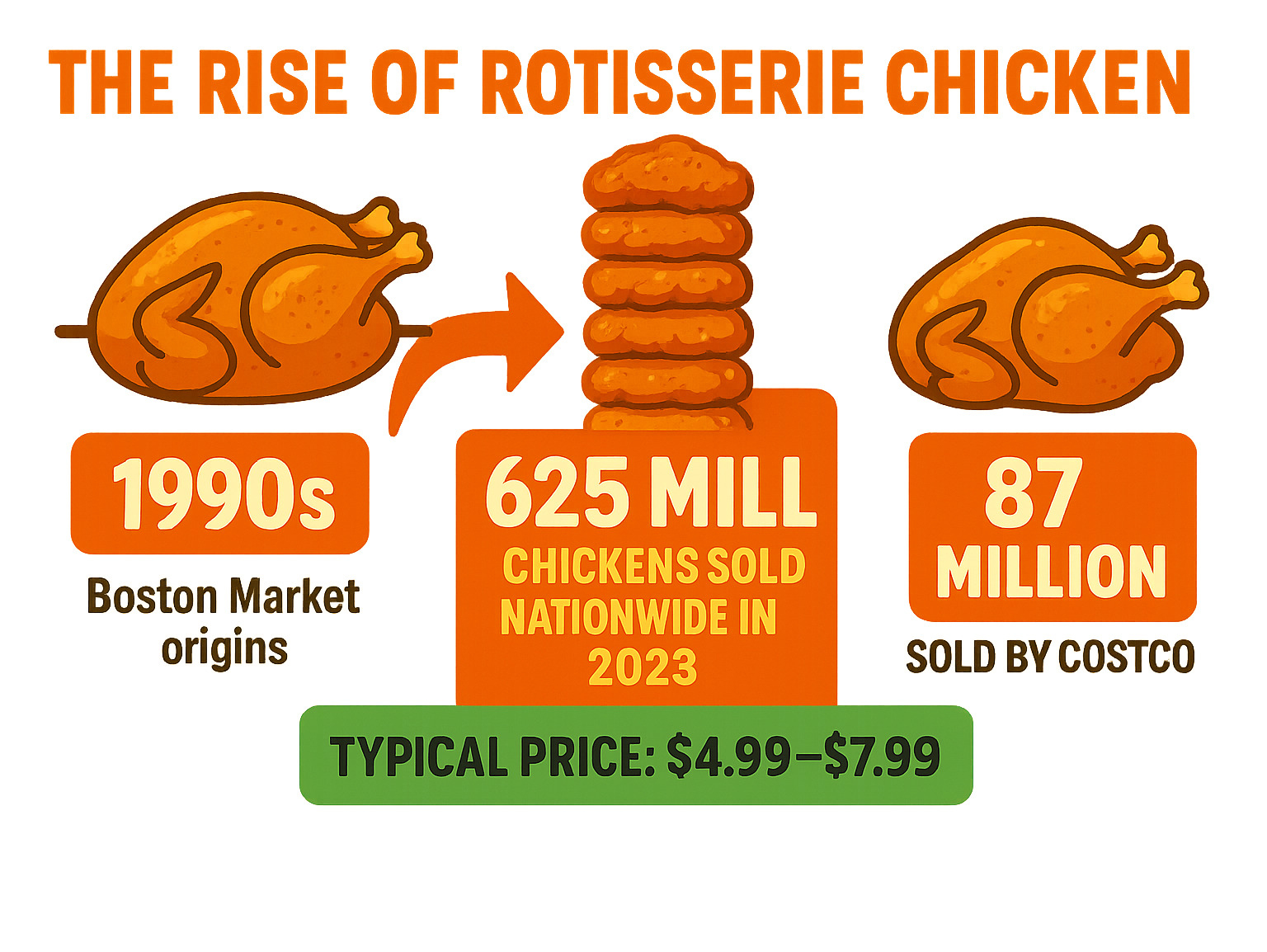
Key terms for rotisserie chicken:
Rotisserie Chicken 101: Preparation, History & Popularity
There’s something almost magical about watching a rotisserie chicken slowly turn on its spit, golden skin glistening as it cooks to perfection. This ancient cooking method has captured America’s heart in ways that would make our ancestors proud.
The secret behind that irresistible golden exterior lies in the continuous rotation. Unlike typical oven-roasted birds that sit still while cooking, rotisserie chickens spend their time doing slow pirouettes, allowing their own rendered fat to baste every inch of skin.
Most grocery store rotisserie chickens weigh between 4 and 5 pounds – perfect for feeding a family of four to six. The magic happens through dry heat, constant movement, and the bird’s natural juices creating a self-basting system that keeps meat incredibly moist while achieving crispy skin.
How is rotisserie chicken prepared?
The journey to rotisserie perfection begins with trussing – tying the chicken’s legs and wings close to the body. This ensures the extremities don’t overcook while the breast meat reaches perfect temperature.
Many commercial operations use either dry brine or wet brine processes. Dry brine involves coating the bird with salt and spices up to 24 hours before cooking. Some stores inject chickens with up to half a pound of salt-water solution containing chicken broth, dehydrated vinegar, sea salt, and natural flavors.
While these flavor injections keep meat incredibly juicy, they significantly increase sodium content. It’s a trade-off between convenience and control that many busy families accept.
The continuous rotation on the spit creates the real magic. As the chicken slowly turns, its self-basting fat renders and coats the skin naturally, creating perfect balance of crispy exterior and tender interior. Professional rotisserie ovens maintain temperatures between 425-450°F.
Why did rotisserie chicken explode in the ’90s?
The rotisserie chicken revolution began with the Boston Market boom in the early 1990s. When this chain started offering convenient, restaurant-quality rotisserie meals for busy families, it was a lightbulb moment for the food industry.
Grocery stores quickly adopted rotisserie chickens as part of their prepared food offerings by 1994, recognizing their potential as both customer magnets and profit centers.
The brilliance lies in the loss-leader strategy – selling these birds at minimal profit margins to attract customers who fill their carts with higher-margin items. It’s retail psychology at its finest.
The most powerful weapon is in-store aroma marketing. That enticing smell greeting you at grocery store doors triggers hunger and encourages impulse purchases in ways no advertising could match.
This strategy proved so successful that rotisserie chickens became standard in virtually every major grocery chain, with stores now selling an astounding 625 million birds annually.
Store-Bought vs Homemade: Ingredients, Nutrition & Price
When debating between grabbing that golden rotisserie chicken from the hot case or roasting your own, it helps to know what you’re really getting. The convenience factor is obvious, but let’s examine what’s inside that perfectly bronzed bird.
A typical serving of store-bought rotisserie chicken (about 3 ounces) delivers roughly 90 calories, 2 grams of fat, and 16 grams of protein. That’s genuinely good nutrition for a grab-and-go meal. The catch? You’re also getting around 250 mg of sodium per serving.
Most grocery chains inject their chickens with salt-water solutions that can add up to half a pound of weight to each bird. These injections typically contain water, chicken broth, dehydrated vinegar, sea salt, and natural flavors. While this keeps meat incredibly juicy, it’s why your store-bought bird might taste saltier than expected.
Scientific research on rotisserie chicken healthfulness shows that despite added sodium, rotisserie chicken provides comparable protein and iron levels to home-roasted versions while being significantly healthier than most fast food alternatives.
The price point usually ranges from $4.99 to $7.99 per bird, making it surprisingly economical when you consider that a raw whole chicken of similar size often costs nearly as much.
The Pros & Cons of Grocery Rotisserie Chicken
Store-bought rotisserie chicken wins on convenience. There’s something magical about knowing dinner is waiting under those heat lamps after a long day. Professional cooking techniques create consistently flavorful results that can be tough to replicate at home.
The time-saving aspect cannot be overstated – perfect for busy weeknight dinners and excellent for meal prep throughout the week. Plus, it’s often more cost-effective than buying and cooking a whole raw chicken when factoring in energy costs and time.
However, there are drawbacks. Those injected salt solutions push sodium levels higher than many realize. You’ll also find various additives like stabilizers, gums, and sometimes sugar that you wouldn’t use in your home kitchen.
One concern involves plastic packaging – hot chicken stored in plastic bags can potentially cause chemical leaching. Additionally, you never know exactly how long that bird has been sitting under heat lamps.
The Homemade Rotisserie Chicken Advantage
Making rotisserie chicken at home puts you in control of ingredients and flavor. You can create that signature rotisserie taste with a simple custom spice rub using paprika, thyme, garlic powder, onion powder, salt, and pepper – while controlling sodium levels.
Home preparation allows you to choose higher-quality, locally-sourced birds and avoid plastic packaging concerns. You can customize seasonings to match your family’s preferences or dietary restrictions. If sustainability matters, check out our guide on Sustainable Dining Practices.
Your equipment options include countertop rotisserie ovens, outdoor grill attachments, and even air fryers like the Instant Vortex Plus. The initial investment pays off over time, especially for families.
The main trade-off is time and effort – you’ll need to plan ahead for brining or seasoning, and cooking takes a few hours. But many find the process surprisingly relaxing.
Buying, Safety & Storage Guide
Shopping for the perfect rotisserie chicken doesn’t have to be complicated, but knowing what to look for makes the difference between a delicious dinner and a disappointing one. These golden beauties have been sitting under heat lamps for varying amounts of time, and freshness matters.
The USDA has strict guidelines – anything in the danger zone between 40-140°F shouldn’t hang around for more than two hours. Yet many stores keep rotisserie chickens under warm lights much longer. This is where your detective skills come in handy.
Start with visual inspection. You want gorgeous golden-brown skin that looks like it just came off the spit. The color should be even throughout, without gray patches, green spots, or anything that’s seen better days. Fresh rotisserie chicken skin should have a slight gloss and feel taut, not wrinkled or dull.
Here’s a pro tip: pick up that bird and give it a gentle heft. A properly cooked 4-5 pound chicken should feel substantial. If it feels surprisingly light, it’s probably been losing moisture under those heat lamps longer than you’d want.
How to choose the best rotisserie chicken at the store
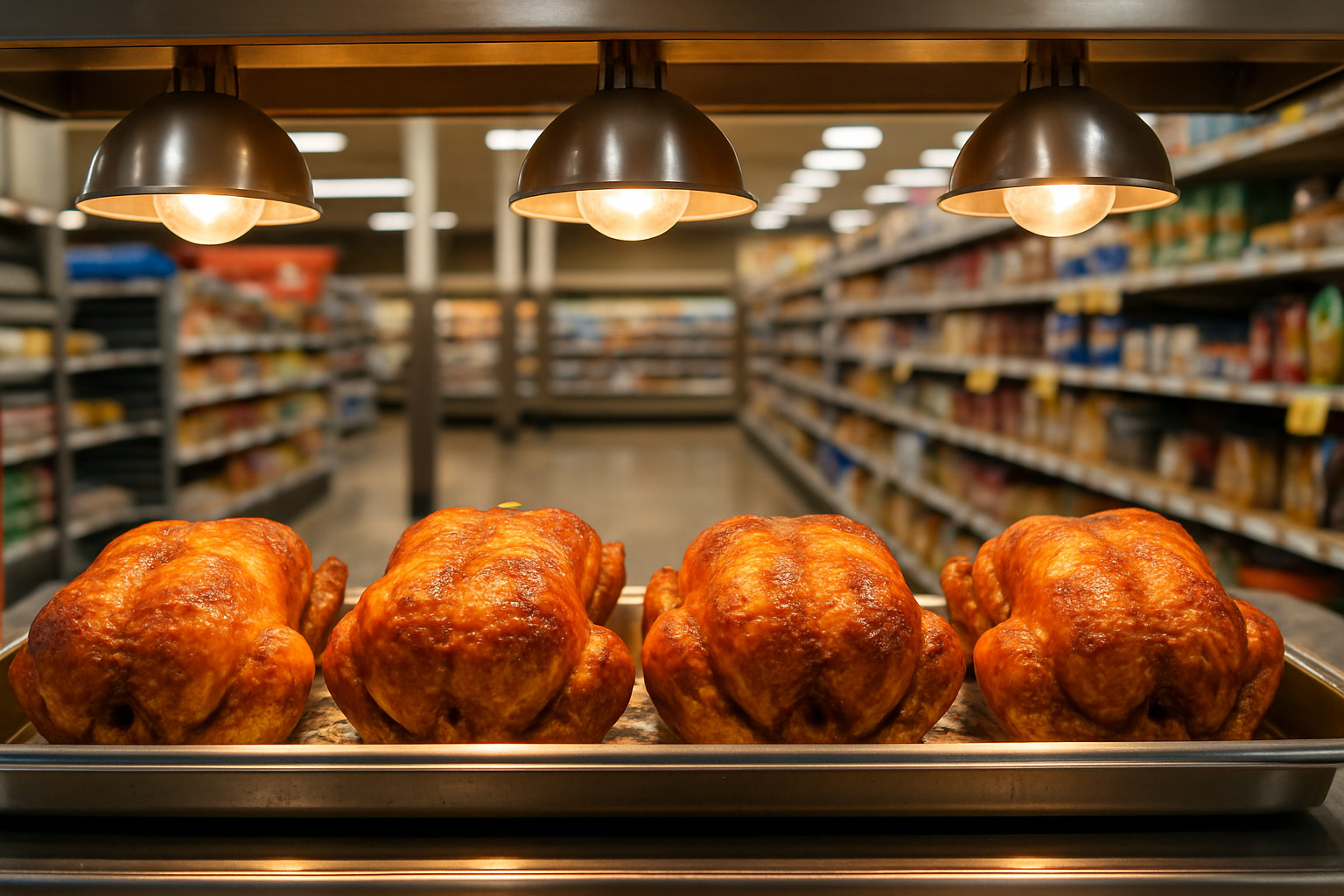
Walking up to that rotisserie chicken display can feel overwhelming with all those birds spinning under lights. The secret is knowing exactly what signals freshness and quality.
Skin color tells you everything about timing. Look for that beautiful golden-brown hue that makes your mouth water. Avoid birds with gray, dull, or patchy coloring – signs the chicken has been sitting too long.
Texture is your next clue. Skin should look smooth and slightly glossy, not slimy or excessively wrinkled. If you can touch the container, chicken should feel warm but not scalding. Cold-to-the-touch birds have likely been sitting around longer than you’d want.
Check for appropriate drippings in the container. You want to see some natural juices, but not excessive pooling. Bone-dry containers suggest the chicken has lost too much moisture.
Don’t be shy about asking deli staff when chickens were cooked. Many stores rotate stock throughout the day, and getting a bird from the most recent batch ensures better flavor and safety.
Smell is another powerful indicator. Fresh rotisserie chicken should smell savory and appetizing. Any sour, off, or chemical odors are red flags.
Finally, avoid overly spiced birds drowning in seasonings. Excessive spicing can sometimes mask flavors that aren’t quite right.
Storing rotisserie chicken safely
Getting your rotisserie chicken home safely is just as important as choosing the right one. The clock starts ticking when you leave the store, so proper storage becomes crucial for both safety and flavor.
First – get that chicken out of plastic bags as soon as you get home. Hot chicken in plastic can cause chemical leaching. Transfer immediately to a shallow, airtight container.
Refrigerator storage is straightforward but important. Your fridge should run at 40°F or below, and that chicken needs to get in there within two hours of purchase. Shallow containers work better than deep ones for even, quick cooling.
You’ve got a 3-4 day window to enjoy your rotisserie chicken at peak quality and safety. If you’ve carved the chicken, store pieces separately from bones – they’ll reheat more evenly and stay fresher longer.
Freezer storage extends your timeline up to three months. Wrap leftovers tightly in freezer-safe containers, and label with the date. When ready to use frozen rotisserie chicken, thaw safely in the refrigerator rather than on the counter.
Reheating & Leftover Recipes
Knowing how to properly reheat rotisserie chicken makes the difference between a delicious meal and a disappointing one. The secret lies in gentle, even heating that brings internal temperature to a safe 165°F while keeping precious moisture locked in.
Your oven offers the most reliable results for reheating larger pieces. Preheat to 400°F and place chicken in a baking dish with just a splash of chicken broth – this prevents the meat from drying out. Cover with foil and warm for 15-20 minutes, checking with a meat thermometer to ensure it reaches 165°F.
When you’re in a hurry, the microwave becomes your best friend. Place chicken pieces on a microwave-safe plate and cover with a damp paper towel – this creates steam that keeps meat moist. Heat in 30-second intervals, checking between each round until warmed through.
For crispy skin lovers, the air fryer method works like magic. Set to 350°F and place chicken pieces in the basket for just 3-4 minutes, checking frequently to avoid overcooking.
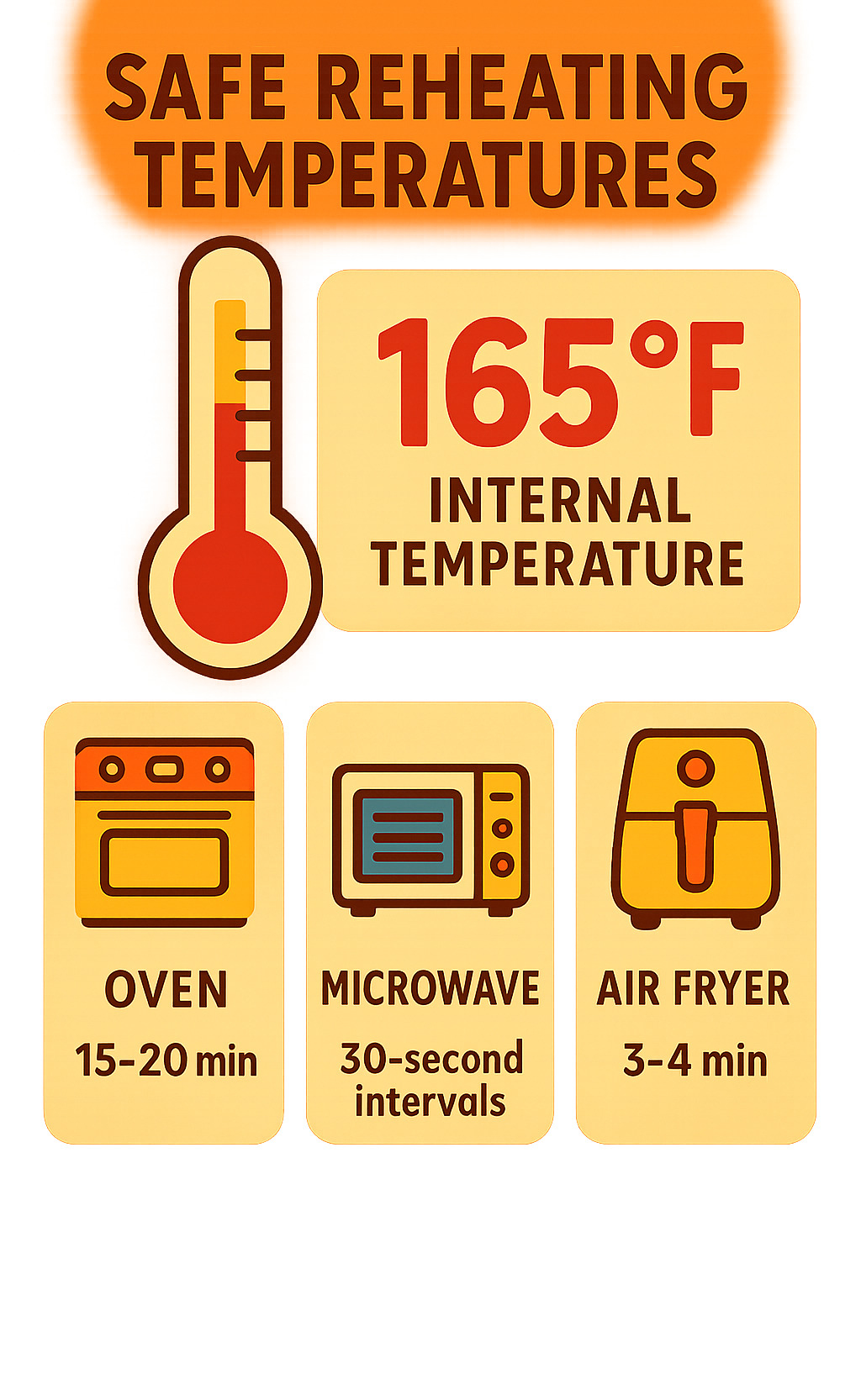
Focus Keyphrase: rotisserie chicken Reheating Hacks
The real rotisserie chicken reheating hack that changes everything? Always add moisture and never skip the meat thermometer. Whether using a damp paper towel in the microwave or a splash of broth in the oven, that extra moisture prevents the dreaded dry, rubbery texture.
Temperature control makes all the difference. Start with shorter heating times and check frequently – you can always add more time, but you can’t undo overcooked chicken.
Creative meals with leftover rotisserie chicken
Here’s where leftover rotisserie chicken truly shines – changing into completely new meals that taste nothing like reheated leftovers. The beauty lies in having perfectly seasoned, tender protein ready to go.
Grain bowls have become the ultimate weeknight solution. Shred leftover chicken and pile it over quinoa with roasted vegetables, avocado, and a drizzle of tahini or your favorite sauce.
For comfort food lovers, chicken enchiladas offer pure magic. Roll shredded chicken in tortillas with cheese and homemade tomatillo sauce, then bake until bubbly. The pre-cooked chicken absorbs wonderful flavors while staying incredibly tender.
Transform your leftover bird into neat coq au vin by adding it to a rich wine sauce with mushrooms and pearl onions. Since the chicken is already cooked, you cut traditional cooking time in half.
Classic chicken salad never goes out of style. Mix shredded chicken with mayonnaise, diced celery, and grapes for gourmet sandwiches. Or create hearty soup by adding pieces to homemade chicken noodle soup.
The key to all these changes? Don’t think of it as using leftovers – think of it as starting with premium, pre-seasoned protein ready for your culinary creativity. For more inspiration, explore our guide to Best Culinary Experiences.
Where to Find & DIY the Best Rotisserie Chicken
When it comes to finding exceptional rotisserie chicken, knowing where to shop makes all the difference. Each retailer brings something unique to the table, and understanding their strengths helps you make the best choice for your family.
Costco has revolutionized the rotisserie game by investing $300 million in their own dedicated poultry processing plant. This massive commitment allows them to control every step, from the birds they raise to the signature seasoning blend that creates gorgeously golden, caramelized skins. Their consistency is remarkable.
Sam’s Club has earned a reputation among taste testers for achieving that perfect balance: crispy skin that crackles when you bite it paired with incredibly moist, tender meat underneath.
For those seeking something more artisanal, specialty markets and local butchers often offer premium rotisserie chickens using higher-quality, locally-sourced birds with unique seasoning blends.
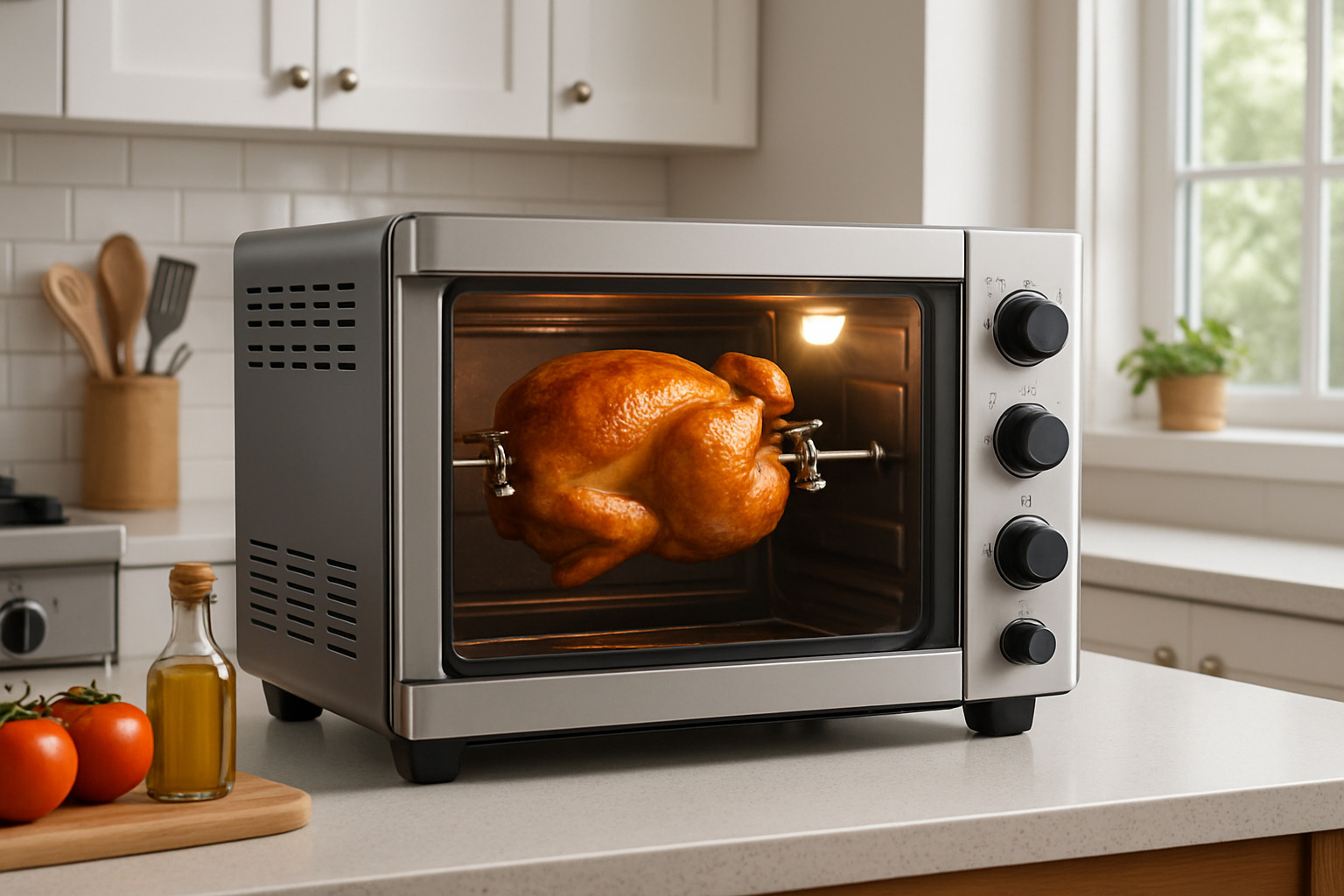
Making rotisserie chicken at home
Creating restaurant-quality rotisserie chicken in your own kitchen might seem intimidating, but it’s surprisingly achievable with the right approach and equipment. The results often surpass store-bought versions because you control every ingredient and cooking step.
The magic starts with proper equipment. You’ll need either a rotisserie attachment for your outdoor grill or a countertop rotisserie oven like the popular Instant Vortex Plus. Don’t forget kitchen string for trussing, an instant-read thermometer, a basting brush, and a sharp carving knife.
The secret weapon in homemade rotisserie success is the overnight dry-brine technique. Pat your chicken completely dry, coat inside and out with kosher salt, then let it rest on a wire rack in the refrigerator for 12 to 24 hours. This concentrates flavors while drying the skin for superior crisping.
When cooking day arrives, truss your chicken securely on the rotisserie spit. Here’s where many home cooks miss a crucial step: poke small holes in the fatty areas around thighs and breast. This allows rendered fat to escape and continuously baste the skin, creating deep browning and rich flavor.
Brush the bird with melted butter to jump-start browning, then cook at 425-450°F while maintaining even heat. Cook until internal temperature reaches 165°F. Let your masterpiece rest for 10 to 15 minutes before carving to allow juices to redistribute.
Sustainable & local options
Choosing locally-sourced rotisserie chicken represents more than just a dining preference – it’s an investment in sustainable agriculture and superior flavor. Many farmers’ markets now feature vendors offering rotisserie chickens made from pasture-raised, locally-grown birds that taste dramatically different from commercial counterparts.
These sustainable options typically cost more than grocery store versions, but the benefits extend beyond your dinner table. Higher welfare standards ensure chickens live better lives, while antibiotic-free and hormone-free practices result in cleaner, more natural meat.
The environmental benefits are equally compelling. Shorter transportation distances reduce carbon footprints, while supporting local farmers strengthens regional food systems.
For food enthusiasts interested in exploring the broader impact of ingredient choices, our guide on Why Locally Sourced Ingredients Make a Difference provides comprehensive insights into how local sourcing transforms both flavor and sustainability in modern dining.
Frequently Asked Questions about Rotisserie Chicken
Let’s tackle the most common questions we hear about rotisserie chicken – from storage concerns to health comparisons and shopping tips that’ll help you become a more confident chicken buyer.
How long does rotisserie chicken last in the refrigerator?
Your rotisserie chicken will stay fresh and safe to eat for about four days when stored properly in the refrigerator. The secret is getting that bird out of any plastic packaging and into a shallow, airtight container as soon as you get home.
Here’s what makes the biggest difference: carve the chicken and store the meat separately from the bones. This simple step helps everything cool evenly and makes reheating much easier later. Keep your fridge at 40°F or below, and always trust your senses – if you notice any funky smells, slimy texture, or weird colors, it’s time to toss it.
For longer storage, you can freeze leftover chicken for up to three months. Just make sure to wrap it well and label it with the date so you don’t end up playing freezer roulette later.
Is rotisserie chicken healthy compared to fast food?
Absolutely! Rotisserie chicken wins hands-down against most fast food options. A typical serving gives you 16 grams of high-quality protein with only 90 calories and 2 grams of fat – that’s pretty impressive for something you can grab on the go.
The sodium content sits around 250mg per serving, which is higher than what you’d get making chicken at home (thanks to those salt-water injections), but it’s still way lower than your average fast food meal. You’re getting the same protein and iron levels as home-roasted chicken without the time investment.
The real magic happens when you pair your rotisserie chicken with healthy sides like roasted vegetables and quinoa instead of processed foods. It becomes a genuinely nutritious meal that doesn’t require any cooking skills or time.
What should I avoid when picking a store-bought bird?
Shopping for rotisserie chicken is like being a food detective – you need to know what clues to look for. The biggest red flags are visual: gray, green, or moldy patches on the skin mean that bird should stay right where it is. Slimy or dull-looking skin is another no-go, as is excessive wrinkling that screams “I’ve been sitting here way too long.”
Your nose is your best friend here. Fresh rotisserie chicken should smell savory and appetizing, not sour or funky. If you catch any ammonia or sulfur smells, walk away immediately.
Pay attention to how the chicken feels too. If it’s unusually light for its size or cold to the touch, it’s probably been sitting under those heat lamps longer than you’d want. And here’s a pro tip: avoid birds with overly spiced coatings – sometimes stores use heavy seasoning to mask flavors that aren’t quite right.
Trust your instincts. If something seems off about any chicken you’re considering, there are plenty of other birds in that warming case. Your family’s health is worth being a little picky about your poultry.
Conclusion
Rotisserie chicken has truly revolutionized how we think about weeknight dinners and meal planning. From those first spinning birds at Boston Market in the early ’90s to today’s impressive 625 million chickens sold annually across America, this golden convenience has become much more than just a quick dinner solution.
What makes rotisserie chicken so special isn’t just its convenience – though saving time on busy weeknights certainly helps. It’s the way this humble bird adapts to whatever our families need. Whether you’re grabbing one from the grocery store for a last-minute dinner or investing in a countertop rotisserie oven to create your own signature blend at home, you’re tapping into a cooking tradition that spans centuries.
The beauty lies in having options that fit your lifestyle. Busy parents can rely on the consistent quality and affordable pricing of store-bought birds, while cooking enthusiasts can experiment with custom spice rubs and locally-sourced chickens from farmers’ markets.
As we’ve finded together, the secret to getting the most from your rotisserie chicken experience comes down to being an informed shopper. Knowing what to look for at the store, how to store your bird safely, and creative ways to transform leftovers into entirely new meals – these simple skills turn a convenient purchase into a week’s worth of delicious possibilities.
The next time you catch that enticing aroma wafting from the grocery store’s rotisserie section, you’ll know exactly what you’re looking for and how to make the most of your golden find. After all, few things in the food world offer such a perfect balance of convenience, nutrition, and pure comfort food satisfaction.
For more food-savvy tips and sustainable cooking practices, we invite you to explore our comprehensive guide to Sustainable Menu Options and continue your culinary journey with The Dining Destination.

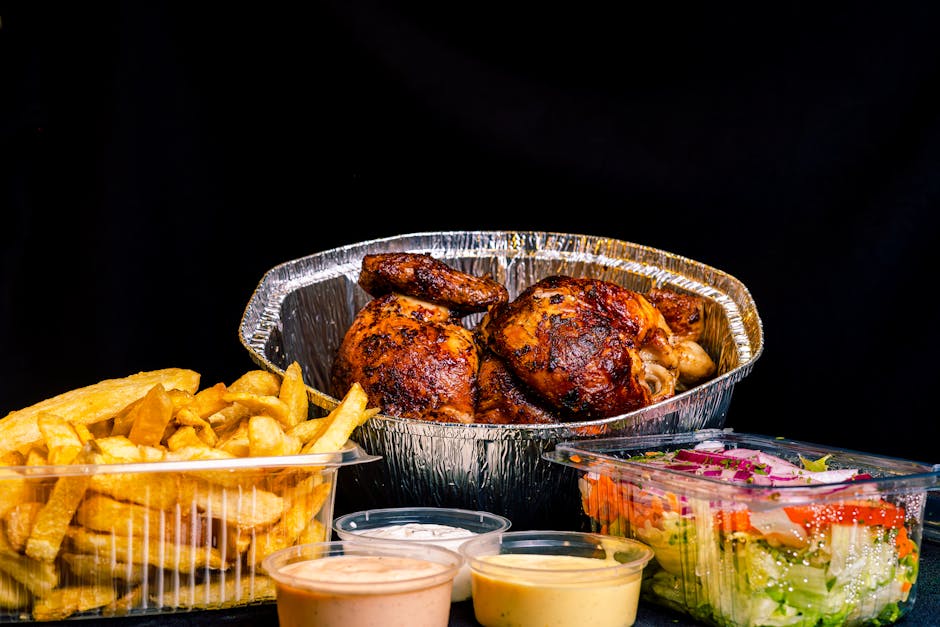






1 thought on “The Complete Guide to Rotisserie Chicken Options and Where to Find Them”
Pingback: Beginner Chicken Milanese Mistakes and How to Avoid Them - The Dining Destination
Comments are closed.